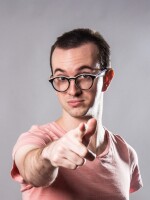Peter Parker was bitten by a radioactive spider and became Spiderman.
Each member of the Fantastic Four gained their powers by being exposed to cosmic radiation.
And Bruce Banner became the Incredible Hulk after getting a heavy dose of gamma radiation.
The idea of radioactive material spawning superpowers is a trope as old as the start of the atomic age.
Thursday at the National Atomic Testing Museum, Ted Hartwell and Steve Curtis of the Desert Research Institute will give a lecture on how radioactivity entered pop culture.
That includes comic book superheroes who are now the blockbuster Hollywood stars.
The link between the two started in the 1940s, according to Hartwell.
"A lot of people think it has to do in large part with the advent of atomic weapons in our world," he told KNPR's State of Nevada.
He said early connections between radiation and superpowers were both in praise and in protest.
"We see that in comics -- this weird dichotomy between radiation being a very dangerous thing, but on some hand, conferring these benefits," he said.
Curtis said the cultural references to radiation have led to a number of myths and misconceptions, which he and Hartwell hope to address during their lecture.
"People tend to be more afraid of radiation than they need to be," he told KNPR's State of Nevada. "They heard about radiation because of the bomb. The first mass understand of radiation came from, you know, a bad event."
He said radiation is used in medicine and in energy, and the general risk to humans is low, barring some kind of nuclear accident.
Joe Kent, the education director for the museum, agreed.
"After Fukushima happened in Japan, we had a lot of people come to the museum very concerned about what they could expect to come and hit Nevada," he said. "There was no real concern. You do have a lot of misconceptions coming in."
Steve Curtis and Ted Hartwell, Desert Research Institute; Joe Kent, education director, National Atomic Testing Museum








